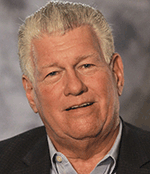Safety Leadership: Why no one is ‘world class’ in safety

Editor’s Note: Achieving and sustaining an injury-free workplace demands strong leadership. In this monthly column, experts from global consulting firm DEKRA Organizational Safety and Reliability share their point of view on what leaders need to know to guide their organizations to safety excellence.
If you want to start a ruckus, tell someone who believes his or her organization is world class in safety that he or she is probably wrong. As one senior safety manager said, “Those would be fighting words in our organization.”
Despite years of pontificating on this topic, no one can definitely answer what’s required to be labeled “world class” in safety. No doubt opinions are numerous, but at this point, what it takes to be world class is mere speculation.
The biggest mistake people make is they point to injury rates to classify their organization as world class. The injury rate they point to is typically a country-specific measure. Trying to use injury rates as proof of world class is no doubt the most flawed measure an organization can use to self-declare a world-class ranking. Outstanding injury rates are an outcome of world-class safety; injury rates by themselves are not the measure of world-class safety.
The primary issue preventing anyone from proclaiming world-class safety is a lack of data on:
- How employees are experiencing the workplace – especially as it relates to how their experience is influencing their ability to control exposure.
- The efforts and metrics that show the organization is undertaking actions to align the employees’ experience with the desired cultural state.
How employees experience the workplace is multifaceted. Factors that influence their experience include the level of production pressure, level of workplace stress, team environment, safety climate, equipment reliability and physical conditions, to name a few.
Some of these influences change daily. Because of this variation, to be world class an organization would have to have measurement tools sensitive enough to measure these influences on a daily basis. As important, the organization would need the capability to record how it responds to the variation in near real time.
Having this information will be the hallmark of a world-class safety organization. Yet today we don’t have the capability or technology to measure these items in real time. Advancements are happening every day that move us closer – and we will get there.
Organizations that have this capability will focus little attention on their injury rates and instead be focused much more on what makes them a highly reliable organization.
Inherent dangers exist in declaring an organization “world class.” First, overconfidence is a real danger. Believing we’ve won the race is risky when the race is actually never over. It allows people to be tempted to take their foot off the gas even though they aren’t at the finish line.
Second, we also know it’s very easy to get to a low total recordable incident rate and declare ourselves a winner without doing the work. This creates a false and potentially demotivating situation, especially if an incident occurs that proves we’re not as good as we thought or announced.
There’s also a false notion that getting recognition as “world class” means excellence. Organizations are highly motivated by accolades, but wanting this title for the sake of having it is dangerous. Checking the box for the recognition isn’t the same as doing the deep work of developing the framework, structure, systems, leadership and culture necessary for true safety excellence. If you want your organization to enjoy validation, it won’t come from external awards. It only comes from the hard work necessary to be great.
Overconfidence in leadership can ultimately lead to the loss of confidence from the workforce. The danger of pursuing external awards is that the workforce really knows whether the commitment is there. Declaring your organization “world class” when the artifacts and visible commitment aren’t there will only destroy the credibility of leadership.
World class is not about a number. It’s not about a preconceived benchmark. World class is about making sure safety is the lifeblood of an organization. Only then can it be validated by workers – and the industry – that the organization is in a class of its own.
This article represents the views of the authors and should not be construed as a National Safety Council endorsement.
 Don Groover is the general manager of DEKRA North America (dekra.us/osr). Groover develops solutions that leverage the latest technology and advancements to improve safety performance in client organizations.
Don Groover is the general manager of DEKRA North America (dekra.us/osr). Groover develops solutions that leverage the latest technology and advancements to improve safety performance in client organizations.
 Jim Spigener is the chief client officer of DEKRA North America. He has helped hundreds of companies around the world implement successful safety solutions at every organizational level.
Jim Spigener is the chief client officer of DEKRA North America. He has helped hundreds of companies around the world implement successful safety solutions at every organizational level.
Direct to your inbox: Sign up to be notified in email about new "Safety Leadership" columns.
Post a comment to this article
Safety+Health welcomes comments that promote respectful dialogue. Please stay on topic. Comments that contain personal attacks, profanity or abusive language – or those aggressively promoting products or services – will be removed. We reserve the right to determine which comments violate our comment policy. (Anonymous comments are welcome; merely skip the “name” field in the comment box. An email address is required but will not be included with your comment.)

